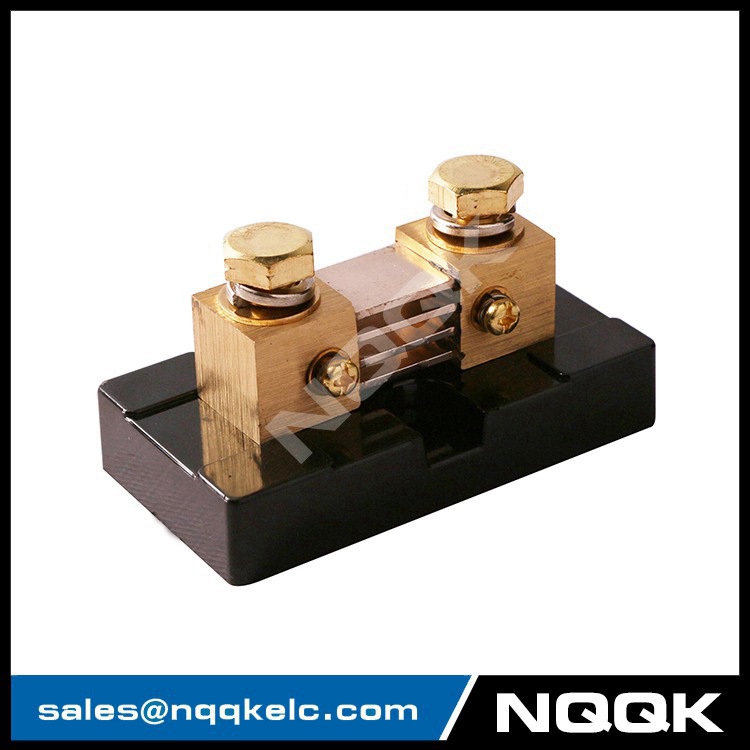500 amp 50 millivolt 500A 50mV current shunt resistor china

This is the standard industry current shunt as used in many high amperage systems. Deltec manufactures the vast majority of precision shunts in the US.
NQQK 500 amp shunt. 3.25" L x 1.75" W x 1.75" H 3/8"-16 terminals. 1.50" center to center on terminals.
FL-US-50-500: 500 amp, 50 mv (400 amps maximum)
500 amp-50 mV Shunt: For systems with maximum current 400 amps continuous with no overloads, or 300 amps continuous with up to 5 minute overloads to 500 amps max. It allows amp readings as low as 0.1 amps. They are suitable for virtually all systems with moderate or large sized inverters. Size 31/4 by 13/4 inch base, 17/8 inches in height. These shunts are suitable for use with Trimetric, Xantrex, Blue Sky, and all other applications that require a precision 500 amp shunt. (Same as Blue Sky 506-0003-01). The terminal blocks on the shunts are made of high quality brass to allow proper heat dissipation and provide strong support for the entire shunt. The resistance blades are made from manganin shunt metal for it's low temperature co-efficient, long term stability and strength. The manganin strips are soldered into slots in the brass terminal blocks with high quality solder to provide a strong, lasting bond. Where mounting bases are provided, high strength phenolic is used with mounting holes designed in for ease of use. NQQK DC Ammeter shunts are designed to provide the highest Quality Performance possible while maintaining their rugged construction characteristics. The shunts are designed and calibrated at the factory to have standard accuracy of ± 1/4%. The FL series of shunts are manufactured to meet the stringent requirements of MILS161B military specifications.
What is a shunt? A shunt is just a very low resistance precision resistor that is wired in series with the load you want to measure. Essentially, it produces a small voltage that meters and monitors can read and convert to an Amp reading.
